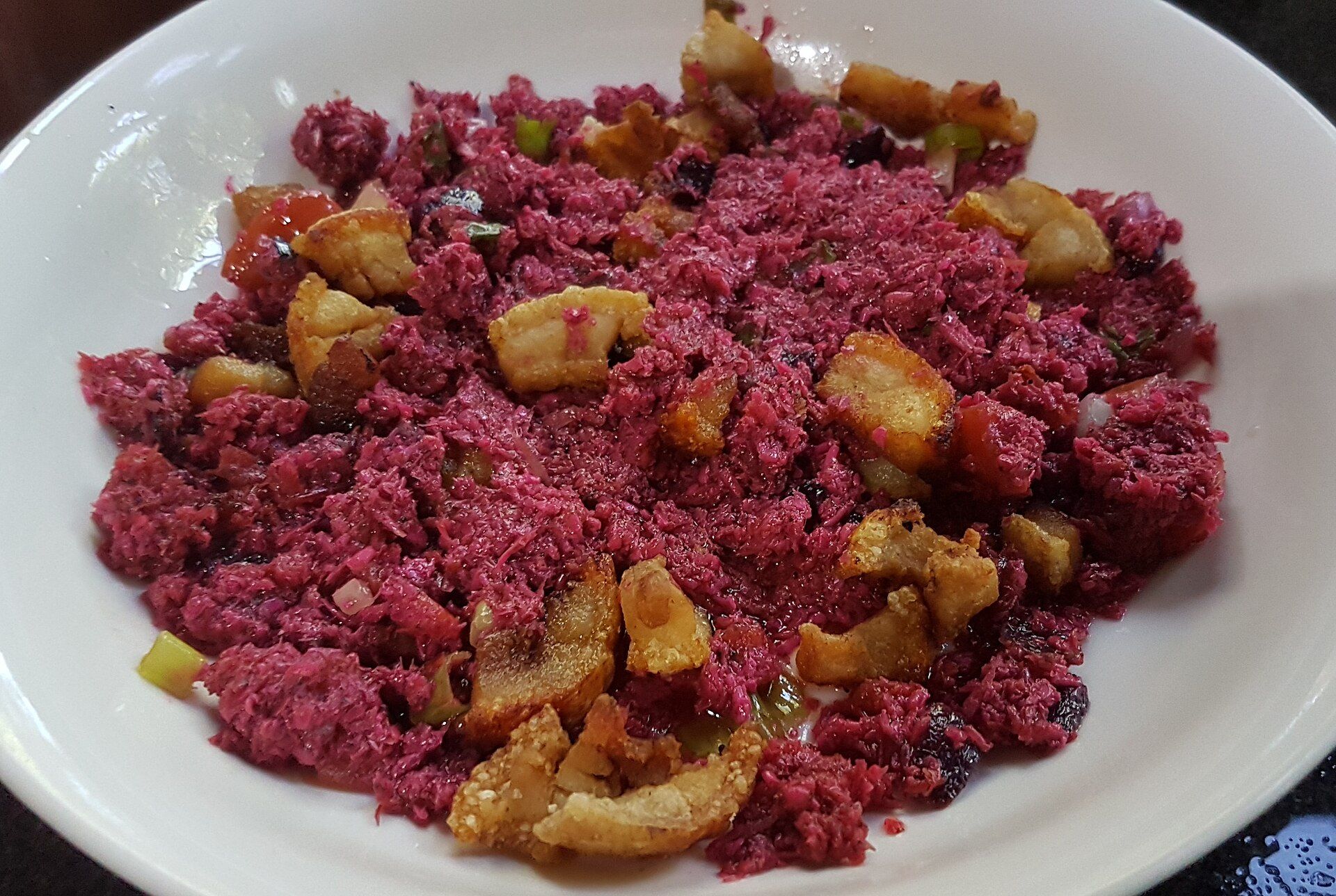Bagoong and Bataan's gold mine
Exploring bagoong's rich flavors and hidden treasures in Bataan
By Sol Vanzi

When Filipino families sit down to eat, the table is always set with a variety of dips and side dishes, often collectively called "sawsawan," which means "something to dip into." These condiments are often poured over rice or viands even before the food is tasted. Thus, saucers and bottles of condiments, both raw and cooked, crowd around the rice and main courses to satisfy everyone's taste: vinegar, patis, catsup, chili sauce, soy sauce, calamansi, and chopped green mango.
Ilocano families almost always have their KBL, or kamatis, bagoong, or lasona (spring onions). Visayans prefer guinamos, their version of salted fermented fish. I am neither Ilocano nor Visayan, but I could eat bagoong daily and not get tired of it. Perhaps it is because our family was raised by elders who made several types of bagoong depending on the season. The two kinds available throughout the year are Bagoong Alamang and Bagoong Balayan.
Bagoong Alamang, which we often made at home, was stored raw in a jar. Bagoong Balayan, named after a Batangas town, survived well in its original bottle. Ginisang Bagoong Alamang, a must-have when serving kare-kare, should be cooked until all liquids evaporate, leaving the small shrimps suspended in oil to prevent oxidation.
Two special types of bagoong are often received as gifts from traveling friends: Padas and Sisi. The first uses small siganid or rabbitfish. The second features tiny rock oysters gathered at ebb tide by island women. Both are sold in recycled rum bottles called "lapad" and are served straight from the bottles with calamansi or lime to tame the saltiness.
My personal favorite is salted roe (fish eggs) of flying fish, which costs an arm and a leg in Japan, where the delicacy is called Tobiko and is marketed as Tobiko Caviar for as much as $480 per pound.

Bataan's gold mine
Here is a secret: fresh Tobiko is available near Manila for a few pesos per kilo. I used to drive all the way to Bagac, Bataan to buy fresh flying fish locally called "borador" from fishermen who gladly separated the roe from the rest of the fish. Flying fish is always cheaper than bangus or tilapia.
Tobiko Caviar Pasta
Tobiko is the star element of a summer dish that swept Japan recently. It's a tomato-based pasta strewn with bright orange Tobiko for color, texture, and flavor. Very easy to duplicate at home, this dish will add a sophisticated and elegant touch to any meal.
Fish roe is a truly exquisite gastronomic experience and a feast for the senses.
What is Tobiko?
Tobiko is the Japanese designation of flying fish roe. Its name is derived from two Japanese words: "Tobi," meaning "to fly," and "ko," meaning "child." The roe is small and comes in a range of colors. Tobiko is distinguished by its unique texture. Its thin shell cracks and bursts under the tooth, releasing a juicy, flavorful interior. It has a taste reminiscent of the sea, quite similar to seaweed. This salty, slightly sweet taste is enhanced by subtle hints of umami.
Tobiko roe brings a touch of elegance and color to any dish. Tobiko roe is often found in dishes such as sushi, sashimi, and other Japanese dishes. However, Tobiko roe can be paired with many other side dishes. They can be used as appetizers, as well as in all culinary preparations. Add a handful to omelets for a touch of color and savory flavor. For a pleasant, surprising texture, place Tobiko on toast or blinis for aperitifs. You can even add them to pasta dishes, rice dishes, salads, or even cheese. Or mix Tobiko roe in a sauce to add a crunchy texture and a delicate salty taste.
Caviar Bagoong
My supreme bagoong indulgence is salted flying fish roe sautéed in garlic, onions, and tomatoes. First, scrape the roe from the egg sacs to allow the salt to penetrate everything. Wash to remove all traces of blood. Salt should be mashed in to prevent spoiling. Keep refrigerated and cook within two or three days.
For any inquiry regarding this article, you may send me an email at [email protected] or send me a DM in my socials.